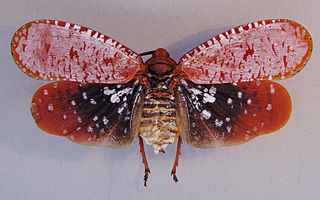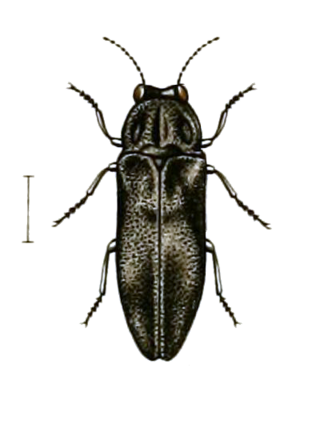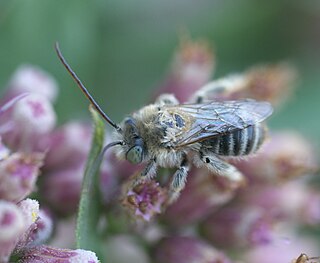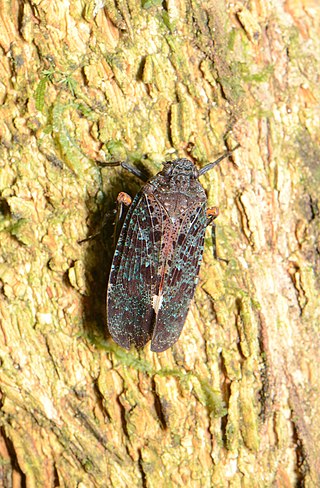
In taxonomy, binomial nomenclature, also called binary nomenclature, is a formal system of naming species of living things by giving each a name composed of two parts, both of which use Latin grammatical forms, although they can be based on words from other languages. Such a name is called a binomial name, a binomen, binominal name, or a scientific name; more informally it is also historically called a Latin name. In the International Code of Zoological Nomenclature (ICZN), the system is also called binominal nomenclature, with an "n" before the "al" in "binominal", which is not a typographic error, meaning "two-name naming system".

The International Code of Zoological Nomenclature (ICZN) is a widely accepted convention in zoology that rules the formal scientific naming of organisms treated as animals. It is also informally known as the ICZN Code, for its publisher, the International Commission on Zoological Nomenclature. The rules principally regulate:

Lepisma is a genus of primitive insects in the order Zygentoma and the family Lepismatidae.

The southern mealy amazon or southern mealy parrot is among the largest parrots in the genus Amazona, the amazon parrots. It is a mainly green parrot with a total length of 38–41 cm (15–16 in). It is native to tropical Central and South America. This parrot and the northern mealy amazon are considered conspecific.
Nomenclature codes or codes of nomenclature are the various rulebooks that govern the naming of living organisms. Standardizing the scientific names of biological organisms allows researchers to discuss findings.

Eristalis is a large genus of hoverflies, family Syrphidae, in the order Diptera. Several species are known as drone flies because they bear a resemblance to honeybee drones.

The family Fulgoridae is a large group of hemipteran insects, especially abundant and diverse in the tropics, containing over 125 genera worldwide. They are mostly of moderate to large size, many with a superficial resemblance to Lepidoptera due to their brilliant and varied coloration. Various genera and species are sometimes referred to as lanternflies or lanthorn flies, but neither do their heads emit light, nor are they even distantly related to flies.

Smerinthus is a Holarctic genus of hawkmoths in the family Sphingidae. It was described by Pierre André Latreille in 1802. Adults have conspicuous eyespots on the hindwings.
The Botanical and Zoological Codes of nomenclature treat the concept of synonymy differently.

Pyrops is a genus of planthoppers that occur primarily in southeast Asia, containing about 70 species. They are fairly large insects, with much of the length due to an elongated, upcurving, snout-like projection of the head. The wings are generally brightly patterned in contrasting colors, and they are popular among collectors.

The subfamily Aphaeninae is a group of hemipteran insects, especially abundant and diverse in the tropics, in the family Fulgoridae, or "lanternflies".

Aaaaba is a genus of beetles from the Buprestidae family. It inhabits locations along the east coast of Australia. It was described in 1864 by Achille Deyrolle as "Alcinous", a junior homonym of a genus of pycnogonids. In 2002, Charles Bellamy gave it the replacement name "Aaaba", but this proved to be another junior homonym, of a genus of sponges. In 2013, it was given a further replacement name, becoming Aaaaba.
In zoological nomenclature, emendations are intentional alterations made to the spelling of taxon names. In bacteriological nomenclature, emendations are made to the circumscription of a taxon.

Penthicodes is a genus of planthoppers belonging to the family Fulgoridae, subfamily Aphaeninae: found in South-East Asia. The genus name was formerly treated as feminine, but in 2022 it was revised to masculine in accordance with ICZN Article 30.1.4.4, changing the spelling of several species' names.

The mealy amazon or mealy parrot is among the largest parrots in the genus Amazona, the amazon parrots. It is a mainly green parrot with a total length of 38–41 cm (15–16 in). It is native to tropical Central and South America. This species, the southern mealy amazon, the northern mealy amazon are considered conspecific.

Lycorma is a genus of planthoppers native to Asia. The first species within the genus was described by Frederick William Hope in 1843 and the genus was formally established by Carl Stål in 1863.

Melissodes is a genus of long-horned bees in the family Apidae. There are 129 described species in Melissodes.

Penthicodes variegatus is a species of planthoppers in the subfamily Aphaeninae (Fulgoridae): found in South-East Asia. It belongs to the subgenus EreosomaKirkaldy, 1906. The genus name was formerly treated as feminine, but in 2022 it was revised to masculine in accordance with ICZN Article 30.1.4.4, changing the spelling of this species' name from variegata to variegatus.
Penthicodes pulchellus is a species of planthoppers in the subfamily Aphaeninae (Fulgoridae): found in southern India, Indo-China and Malesia. It belongs to the subgenus EreosomaKirkaldy, 1906. The genus name was formerly treated as feminine, but in 2022 it was revised to masculine in accordance with ICZN Article 30.1.4.4, changing the spelling of this species' name from pulchella to pulchellus.
















